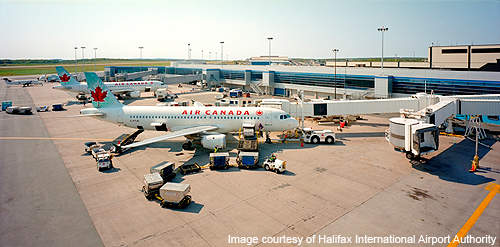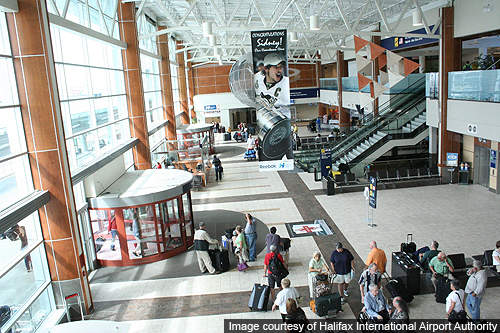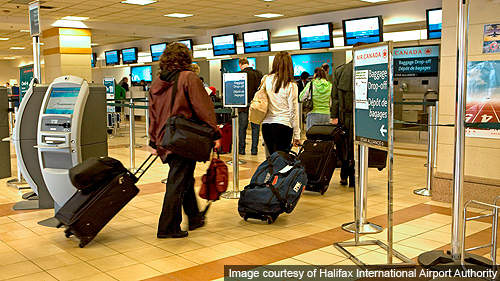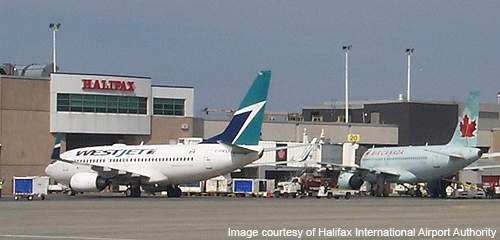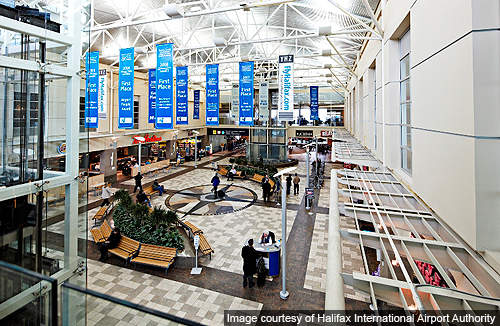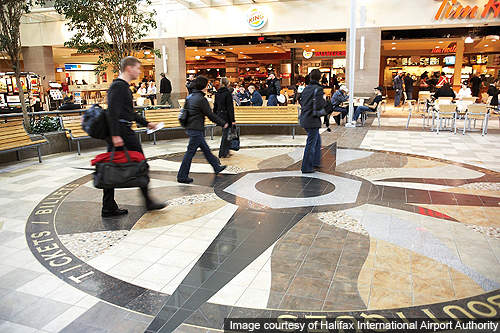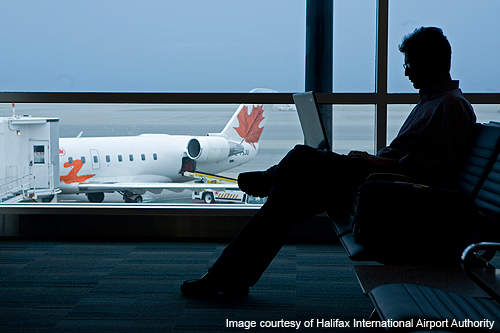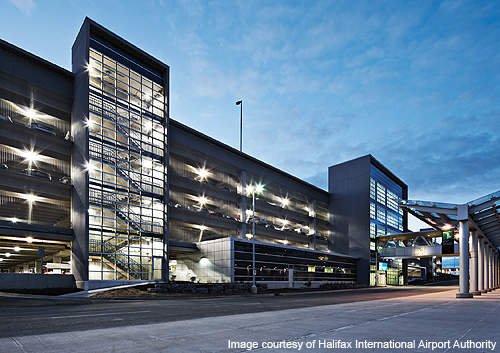Halifax Stanfield International Airport is the seventh busiest airport in Canada. It is located in Nova Scotia, Canada, and was opened in 1960. In February 2007, it was renamed as Halifax Robert L Stanfield International Airport. It is owned by Transport Canada and operated by Halifax International Airport Authority (HIAA).
In 2013, the airport served more than 3.6 million passengers and recorded 83,347 aircraft movements.
Expansion projects at Robert L Stanfield Airport
HIAA initiated its airfield restoration programme at the airport in May 2005. The project includes long-term maintenance of runways and taxiways of the airport, which were not upgraded since 1987. The programme has been planned to be executed with a year-wise schedule.
Works in the first year of the project started in May 2005 and were completed in October 2005. The works included milling and paving the construction of a new electrical duct bank and the installation of new cables, stop bars, lights on taxiways and new regulators. They involved an investment of $8.5m.
Renovations works at the terminal were completed in July 2014 in another major development. These included upgrades of the domestic / international and US preclearance check-in halls. The south-end exterior of the terminal building was altered. The building now has a glass façade that allows natural light inside.
Renovation of runway 14/32
Works planned for the second year of the programme were completed in mid-2006. The focus was on the renovation of runway 14/32. While this work was being carried out on runway 14/32, the main 05/23 runway remained in service to continue operations.
Paving and lighting installations were completed on a portion of runway 05/23 in 2007, while runway 14/32 remained operational during this construction phase.
In 2008, work on the final portion of runway 05/23 was completed and in 2009 and 2010, construction of apron areas and taxiways was finished.
Works in the seventh and final year of the airfield restoration programme began in May 2011. They will be completed in three phases by 30 August 2011. Total funding for the 2011 programme is $7.5m.
Construction plans for Halifax Robert L Stanfield Airport
In the first phase of construction, restoration to an aircraft parking apron was completed. In the second phase of construction, work on a taxiway delta was completed. In the third and final phase of construction taxiway foxtrot was completed.
In July 2009, construction was started on a new multitenant cargo facility. The $15m project included construction of a 40,000² facility, with 7,000m² of temperature-controlled cargo space. The facility was officially opened in June 2010.
A ten-year capital plan (2011-2020) to improve the passenger safety and upgrade airport facilities was announced in August 2010. It includes the expansion of domestic and international check-in halls, north and south ends of the existing terminal, food and retail outlets and additional space to accommodate additional jet bridges.
HIAA initiated a $28.3m runway (05/23) extension project at the airport in February 2011. The extension was officially opened in January 2013. The project included extension of the runway length from the existing 2,682m to 3,200m. It was funded by the federal government, the provincial government and HIAA with $9.1m, $5.05m and $14.1m respectively. The design and engineering works were completed by 2011.
Airport terminal features
The airport has a single-passenger terminal with three levels, namely the main, lower and departure levels, which opened in September 1960. The main level is for domestic and international check-in and arrivals. The facilities on the main level include check-in, pre-board security screening, restaurants and retail shopping.
Car rental companies and other ground transportation facilities are located in the lower level of the terminal. The lower level has south, north and central tunnels, which connect to parking and car rental areas.
The departure level is used for domestic and international departures. It also houses US check-in and pre-board security screening counters. The terminal has 32 gates, 13 bridge positions, 45 check-in desks, 23 self-service check-in kiosks and five baggage claim belts.
Free Wi-Fi is available throughout the terminal. The airport has four cargo handling facilities with a total warehouse capacity of 110,051ft².
Self-serve baggage drop facility
The self-serve baggage drop facility was introduced in the Halifax Stanfield International Airport in 2014. The fully automated passenger processing model uses latest technology to simplify and speed-up the passenger check-in process. Halifax is the first airport in North America to have this facility. HIAA partnered with airlines such as Air Canada to develop the facility.
The new system was introduced as part of another major development project at the airport that included the modernisation of the baggage handling and screening equipment, the expansion and upgrades to the domestic / international check-in halls, and renovations to the terminal building.
Baggage handling system
A new baggage handling system was introduced at the airport in 2014. It integrates with the self-serve baggage drop and enables enhanced safety and security at the airport. It occupies less space and delivers high-capacity, sophisticated baggage handling capabilities using advanced baggage screening technology.
Control tower
The control tower at the airport is a six-level building and equipped with state-of-art air traffic control consoles and communications equipment. It is operated by NAVCANADA, the only air navigation system operator across Canada.
Runways and taxiways
The airport has two runways. The first runway (05/23) is 2,682m long and features instrument landing system (ILS) category II standards. The second runway (14/32) is 2,347m in length and conforms to ILS Category I standards. The airport also has 11 taxiways designated from A to H, J, K, M. All taxiways except taxiway K are 75ft wide, while K is 50ft wide.
Parking areas
The airport has a five-level car park with 1,900 spaces, along with 400 spaces for rental cars. An additional 800 spaces are available in the exterior car park and the Park’N Fly facility has 2,800 extra spaces available.
Maintenance facilities
The airport has aircraft maintenance, mechanical handling, heated storage, air-conditioned storage and refrigerated storage facilities. The maintenance facilities include fuelling, ground handling and catering and so on. They are served by fixed-base operators such as Esso Avitat, Shell AeroCentre and Gateway Facilities.

